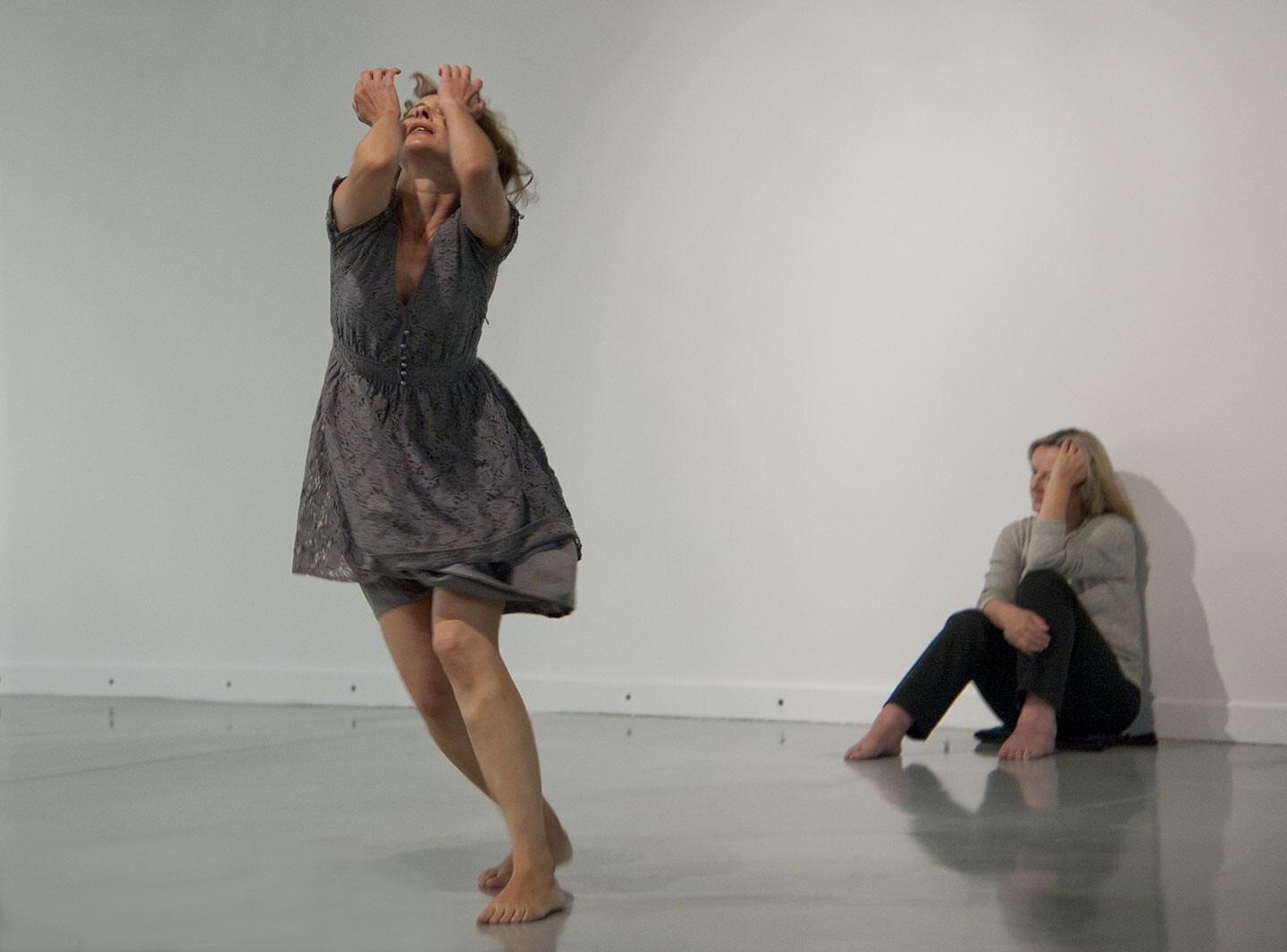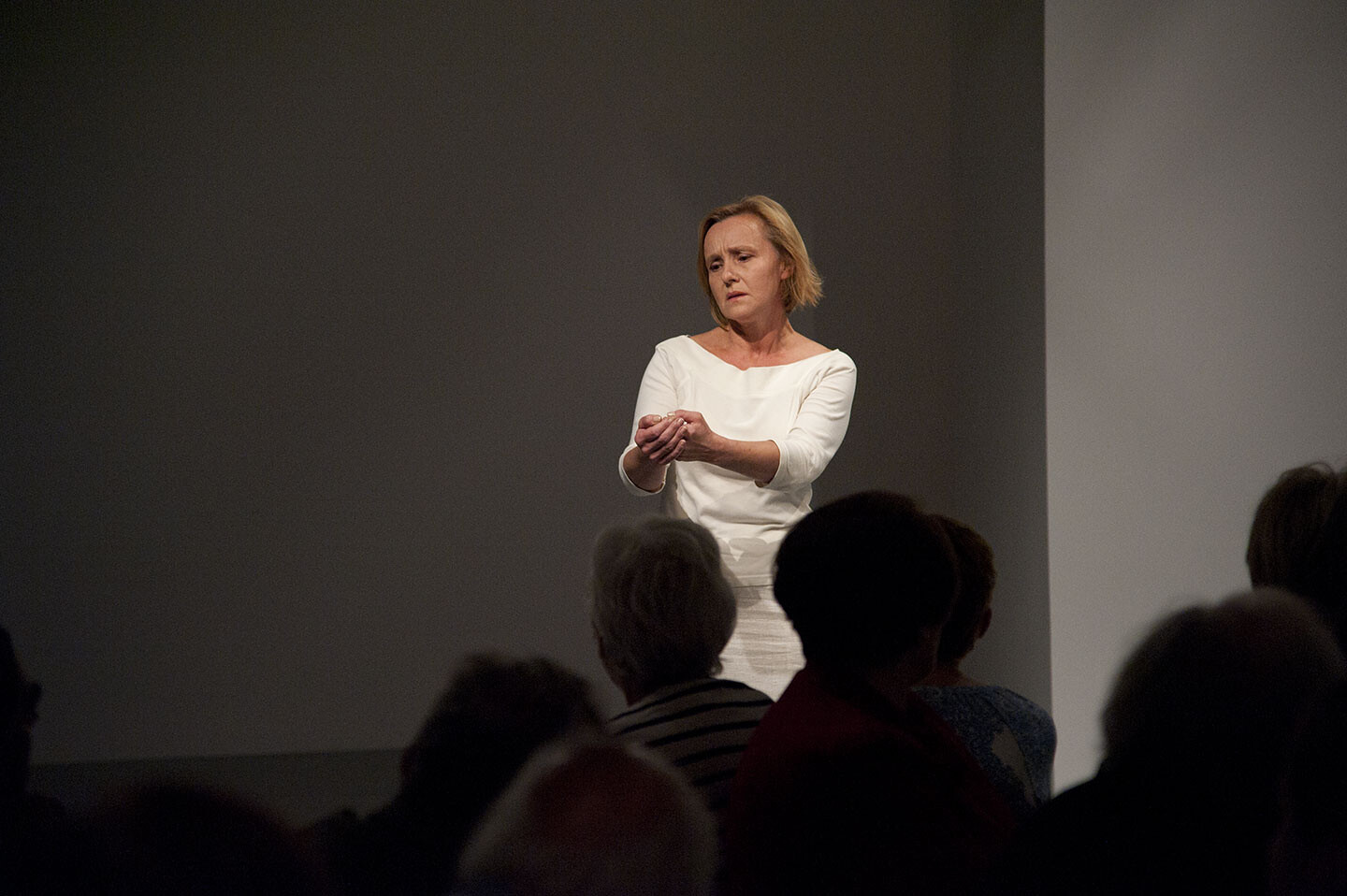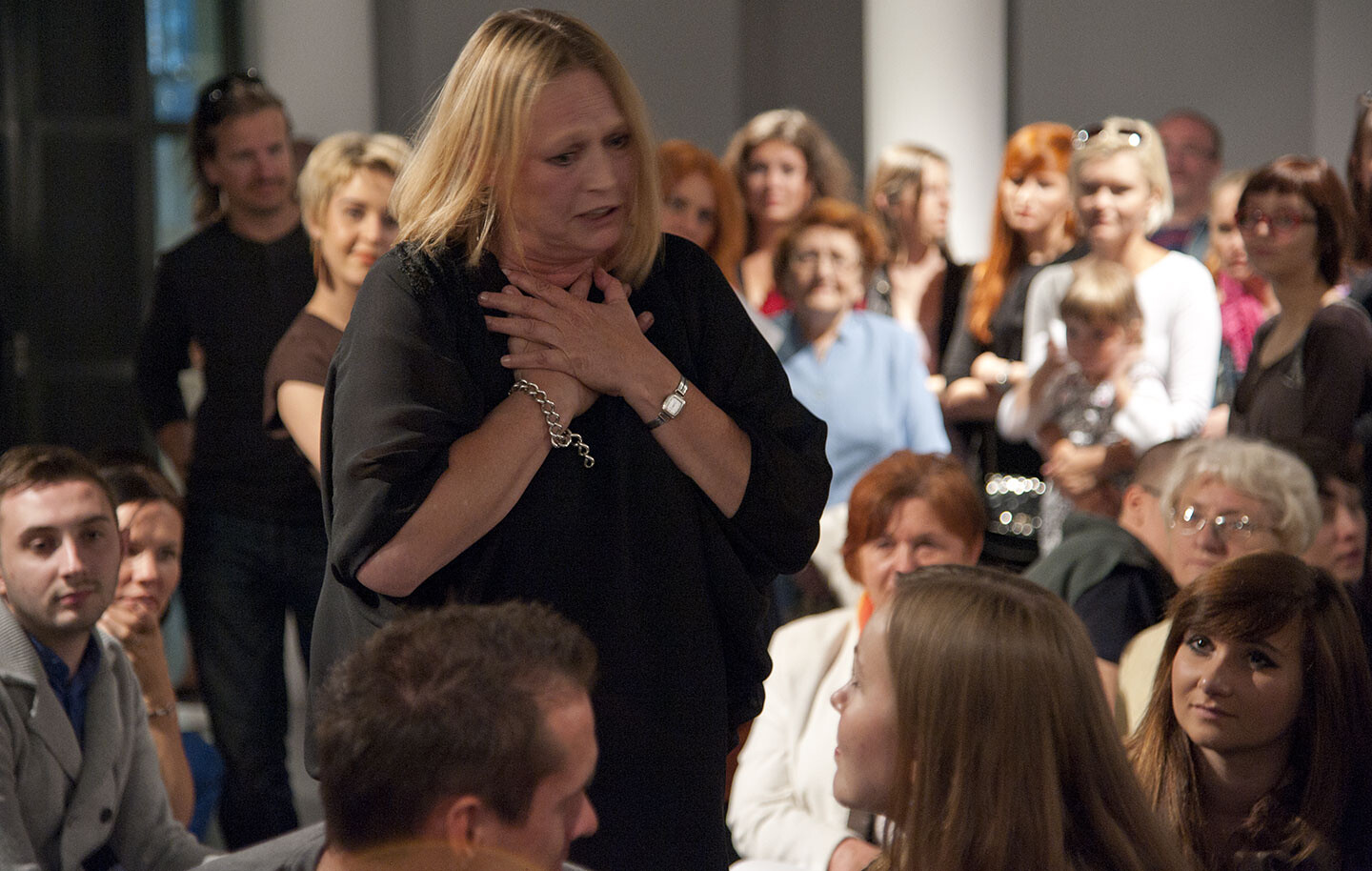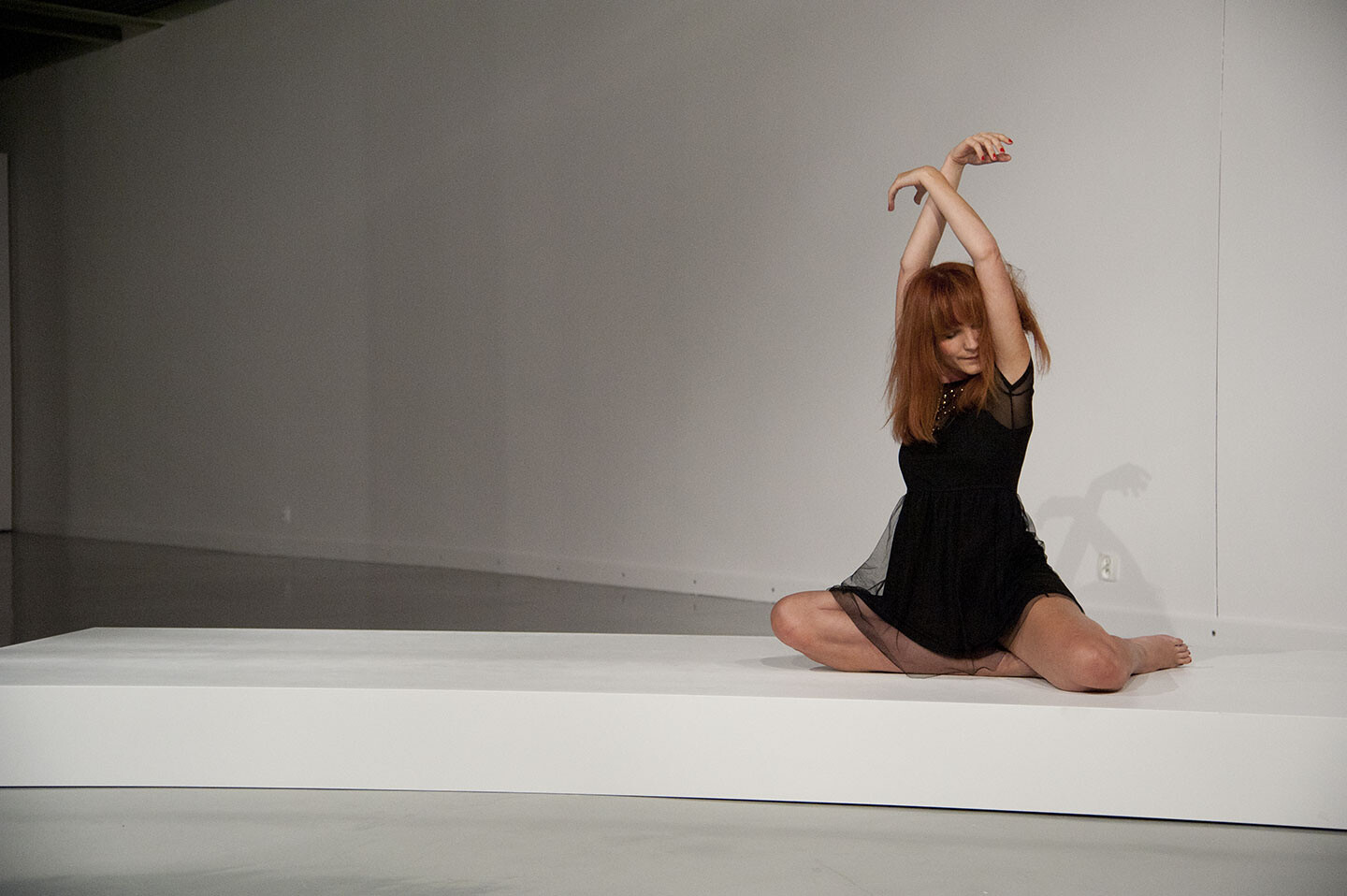Without the labour of large-scale, collective social organization, declaring one’s desire for global change is nothing more than wishful thinking. On the other hand, melancholy—so endemic to the left—teaches us that emancipation is an extinct species to be wept over and that blips of negation are the best we can hope for. At its worst, such an attitude generates nothing but political lassitude, and at its best, installs an atmosphere of pervasive despair which too often degenerates into factionalism and petty moralizing.
—Laboria Cubonix, “The Xenofeminist Manifesto”
Summer 2016: I am playing Illuminati, a card game based on some RPG story, with three male colleagues. All of them share feminist convictions, and are fierce defenders of women’s rights. One of the players is hosting us in a countryside house in northern Poland. A friend, Marsha Bradfield, who is also a feminist scholar, just like myself—only based in London, not Warsaw—sits in a room next door, writing an article. A woman’s work is never done, also in academia, and especially in the UK.
Soon after the beginning of the game, the boys stop hearing me. I am tall and rather bold, I play the game well, and I talk to them, but they can’t hear me. Also, they talk with each other but they barely talk to me at all. They hear their own voices and the voices of other guys, which are some three times louder and lower than mine. But they can’t hear me, even when I talk to them directly. I start to feel like a younger sister. You know, the one embarrassingly following her older brother around but never allowed to fully engage in any game, because, as he tells her: “You are too small.” Imagining this relationship at play, I laugh since I am rather big, and am only one or two years younger, which around the age of forty does not count as a real difference. But among children it does, and we are in the children’s room again as we play Illuminati. Since the game consists in taking over the world via all kinds of spoken exchanges—machinations, shaky tactical alliances, and robberies—I just can’t play it in the usual way. So I decide to win quickly to make my point—and my presence—known. At the moment of my last throw of the dice, they realize that I almost won. When my dice deceive me (I had a 10/12 chance, and lost), and I do not win that instant, my colleagues (obviously!) ally against me and plot to stop me from winning, again talking only amongst themselves, as they had done for the past forty-five minutes. But their exclusive conversing did not count before. Now it does. So in order to disturb their plot, I try to talk again. This time I make my voice louder and lower. They stop, look stunned, and shout at me: “Stop screaming! What happened? Can’t you just talk normal?”


Zorka Wollny, Ophelias. Iconography of Madness, 2012. Muzeum Sztuki Łódź. Courtesy of the artist. Photo by Adam T. Burton.
“No,” I say. “For the last hour you would not hear me, so now I’m using another voice register. I am not screaming, I am just pitching my voice so you can hear it as one of yours.” They laugh at me and mansplain boringly about how I totally miss the point. Then Marsha, the colleague working next door, shouts from her room: “I couldn’t help overhearing your game! I stopped working on my article because it was so hilarious! Ewa is totally right, and things happened exactly as she said.” There was silence, and then we got back to the game, which now proceeded a bit more inclusively.
But then, there it was: my sudden realization that I don’t want to be included. I want to belong. Not just because I brought the game, not just because I was the only fluent player, but merely because we are friends on a bloody holiday, playing a game, not fighting the eternal gender war. Or at least that was my assumption. I realized I want to belong “there”—there where women are, there where we of the queer nation reside, there where the boys work their asses off to fit into a boyish scenario. I do not want a divided scenario, partitioned into sectors where I can or cannot go, including any zones where I need “inclusion” in order to just enter or exist. I want the men to go through inclusion, a mandatory practice, at least once in their lifetime. I want Jane Elliott’s “Blue Eyes/ Brown Eyes” workshops to happen in every school everywhere.1 In other words: I want the whole life, not just bits of it.
I recently used this formula (the whole as opposed to bits and pieces) in trying to survive a long, painful discussion between women over social media. Some women wanted to create repressive tools to be wielded against deceptive men in political organizations. This was an interesting discussion—we usually enumerate the assholes acting against women in our political, academic, and artistic circles on “girls nights” or in spaces which the liberal narrative depicts as “private.” Here our rants and sarcastic enumerations of the possible punishments for the deceptive men, who use the organization’s databases as their dating site, went semipublic, and since some of us belong to organizations and political parties, it could be seen as a plan for a future policy or something similarly realistic. It was a great feeling to imagine the sudden fear it might have caused those men, who got used to their sexism walking free, and who now realized that we might actually enact the measures we discussed. The measures were frivolously Kantian in their universality, so for some people—for example, those luckily living their lives without ever considering the categorical imperative seriously—reading our discussion must have really hurt. In our discussion some women felt they would immediately be included among the repressed for their free sexual life or polyamorous standards. Some women on the other hand suggested measures that would immediately cause disasters by counting every smile and compliment as abuse. But, as Gramsci wrote, times of transition bring up monsters; we are not ready yet for feminist measures of justice, because feminism is not a given, it is under construction, and for me the discussion about the possible ways of shaming or otherwise punishing men’s abuse was an exercise in what we want and how we express it, rather than a set of prêt-à-porter rules for feminist justice. But some participants in the discussion took it very realistically, in both directions—repressive and libertarian—and at times it felt really heavy. I could not believe what I saw there. Clearly some feminists cannot simply agree that we women and people who identify as such can be free and have rights at the same time. As utopian and impossible as it sounds, I had to say it in that discussion as well: I want it all. I want a promiscuous life, and support when I am wounded. I want sex and the risk of engaging; I want to be clever, to make wise choices, and to retain the right to be silly; I do not want to take sides on the question of who I am. I want to have different options and I want to support people who are clearer and more orderly in their intimate lives than I am, regardless of whether they are proud wives with three children who never sleep with other men or women, or partners or women who have sex with literally anyone they like. And I want all women to have support when we need it, and also I do not want to build another court of justice. We already have those, thank you very much; and we also have extralegal means of claiming justice when necessary—social media campaigns chief among them.
Upon receiving the invitation to write about feminism, I realized that not only are we now reflecting on two intensive years of women’s protests in several countries around the world—starting in Poland, with thousands of women marching for reproductive and economic rights in fall 2016, then in South Korea, Mexico, Argentina, Italy, the US, and then some thirty countries for the International Women’s Strike on March 8, 2017—we have also marched toward and through the fiftieth anniversary of the 1968 revolts in various parts of the world.2 The demand I expressed earlier—to want to have it all—clearly resonates with the old Parisian tune of demanding the impossible. But now again, just as then: Why shouldn’t we?
In her great revision of classical interpretations of Antigone, theorist Bonnie Honig stresses the necessity of reading the ancient heroine—who is traditionally contrasted with her sister, Ismene—not just as a divergent family member but also as her sister’s ally in anti-patriarchal struggle.3 In Antigone, Interrupted, Honig claims that Antigone and Ismene have a sororal pact; they work in unison against masculine domination. One of the strongest patriarchal divisions of the European intellectual tradition is therefore undermined, not only leaving two always-divided sisters reunited, but also giving us a sense that certain conflicts among feminists are perhaps more useful for the patriarchal maintenance of masculine domination than they are for our movements.
Today feminism tends to attract women of different ages. The movement seems alive and far from over. Post-1970s, there were some arguably quieter years, and now once again feminists are all amazed that following some thousands of years of patriarchy, the last fifty years haven’t brought substantial changes in all aspects of our political, social, economic, and cultural lives. There was to be a revolution, but there was not. And this is not a failure, but it does reveal weaknesses. It proves that patriarchal, heteronormative habits cultivated over centuries, generously backed by religious myths, silence, and economic domination over women, have not evaporated. The aforementioned massive street protests in over thirty countries account for the constant need to fight for women’s rights and gender equality. Perhaps the struggle continues for different reasons in different locations, but the need for it still extends internationally.


Ewa Majewska & Paweł Krzaczkowski, 50x68 KDA, 2018. Museum of Modern Art, Warsaw. Courtesy of the author.
The #MeToo campaign has reached much further than expected, gathering women in different countries around different kinds of sexual abuses: from the Nobel Academy in Sweden to young leftist journalists in Poland, from heavily mediatized Hollywood scandals to the perhaps less globally visible, yet no less painful, fights against sexual violence and harassment in Bollywood. The campaign allows an unpacking of problems that had been silenced for decades—abuses perpetrated in daylight, which nobody seemed to want to see. Now we all learn different “registers of seeing.” We are talking about matters that, until recently, conveniently sat in what Lauren Berlant called “the Oz of America”—the domain of supposedly liberating privacy. Already in 1999 Berlant wrote about the “normative/utopian image of the US citizen who remains unmarked, framed, and protected by the private trajectory of his life project, which is sanctified at the juncture where the unconscious meets history: the American Dream.”4 That Dream and all the perhaps smaller but no less pertinent dreams built in postwar societies (in the West and East) served to maintain the safety men had in their private lives. In a similar vein women were, and to some extent still are, “preserved” from entering the public realm. And language, as it often does without our own invention or intervention, also acts against women in this formulation, since a “public woman” still connotes something very different from the idiom “public man.”
Parallel to the global revindication of the public sphere in recent decades with social media, and the reassertion of the need for positive body images in the media and for reproductive rights—given the rise of proudly patriarchal and socially ultraconservative politics—feminists today also reclaim the cultural archetypes of femininity to dismantle the existing canon. Similar to Honig’s unearthing of Ismene and Antigone’s sororal pact, certain artists are now returning to classical female characters to give them new lives. The Berlin-based Polish artist Zorka Wollny’s recent work on Ophelia clearly follows this trajectory. Wollny’s Ophelias. Iconography of Madness (2012), which is a performance and theater piece at the same time, features twelve professional actresses who play Ophelia, one after another. The actresses, who come from different theater traditions and generations, all played Ophelia according to their divergent training, knowledge, skills, and so on.5 The procession of Ophelias was stunning—the audience entered the world of deception, sorrow, and madness caused by the system of patriarchal rule. Some performed the character as a woman completely alienated from reality, while others seemed perfectly “normal.” Any woman would feel that they might also fall, that in the given condition (of Shakespeare’s Hamlet), they would not survive. The eternal feminine that opened before our eyes did not consist in the perpetuation of women’s beauty or seductive capacities, as in the stereotypical fetish of femininity; it became a feminist Howl of the female personae non grata in the male-dominated world. In my text accompanying the project’s online release, I claimed that these Ophelias performed a structural transformation of the public sphere. In borrowing a key term from Jürgen Habermas’s classic analysis, I tried to détourne it in a Debordian way, or simply steal it, a strategy of feminist critique suggested by Hélène Cixous in her Medusa’s Laughter.6 The transformation of the public sphere by women who do not hesitate to show their affect, who speak with and/or without sense, who supported the man they love as long as they could and obeyed their father as far as they were socialized to do, amounts to another inclusion of women into a sphere where they do not belong. An audience might have had mixed feelings when looking at those twelve women performing Ophelia in quick succession, but one thing definitely became clear to every viewer: in those given conditions, we cannot win. Whether we are big or small, old or young, passive or aggressive, or both, we can’t win in a game whose rules have been written within a patriarchal script, one in which we don’t belong. There is only one thing to be done: we must turn the tables of the social staging of the public sphere, undermining its gendered, normative framework.
The liberal, exclusive norms of the public sphere still govern academia, where women have always been designated as unwanted strangers. The expected public subject is, as Carole Pateman and other feminists have argued, shaped to fit masculine socialization and gender roles. The list of “common topics” excludes those attributed to women and femininity, such as bodies, affects, and relations. In academia this means that the conduct of students or professors can be criticized or punished when it expresses anti-discriminatory concerns, but will be seen as covered by freedom-of-speech or other constitutional rights and liberties when it is racist, sexist, or homophobic. It means that in trying to build a nonsexist academia, we face many more risks than those colleagues who push it towards a discriminatory extreme. Women in academia also face unexpected difficulties when it comes to expectations. If we adapt well in this male-dominated context, we are seen as “resigning from femininity,” although some of us obviously do not follow its traditional script in the first place—by being butch, intersexual, trans, or queer, or by simply not giving a shit. If we tend to embrace the traditional feminine gender costume, on the other hand, we are seen as aliens; we risk our every spoken or published word being judged as somehow determined by our gender, our socialization, or even the clothes or makeup we might wear. Or, we risk being judged by our affect. For some reason it seems, from personal experience, that people with short hair and trousers are perceived as beings who do not experience emotions, while those with longer hair and skirts clearly generate too much affect. Offensive remarks, shouting, or sudden withdrawals are seen as less affective than tears or other expressions of vulnerability. I won’t even bring up the topic of academics who are also mothers, and who, apart from the problems I already enumerated, have to face the risk of being discriminated against in their careers. It is often claimed that after maternity leave women are not up to speed on their discipline’s newest trends, or they “do not care” for scholarly developments because of their preoccupation with their children. These nonsensical claims have real implications for women’s lives, making them far less visible among professors, for example, than men, whose careers proceed “smoothly.”


Zorka Wollny, Ophelias. Iconography of Madness, 2012. Muzeum Sztuki Łódź. Courtesy of the artist. Photo by Adam T. Burton.
As feminists, we are often used in the academy as some kind of extra, unpaid counseling workforce available to handle every case of masculine misconduct, harassment, or discrimination. From personal experience, this rings true, regardless of whether we are prepared to take up the excess emotional labor: our training is rather in history, microbiology, or architecture. In this way we regularly serve as strong examples of women whose knowledge about gender is used and abused in ways that other scholars never have to deal with. I remember participating in conferences where other people were discussing their presentations, and I was handling every case of discrimination, explaining what gender is and how male privilege was built historically, even though my papers at these conferences were about Rancière, Althusser, resistance, or precarity. It was somehow assumed that I could handle all this. After several drinks in conference receptions later, colleagues mansplained to me that I should always be ready to respond to the needs of any (male) scholar to learn about gender. Additionally, I was told how scary I seem at first, but then how this image changes. I had to prepare useful responses to demands like these—to handle cases of harassment or discrimination, to teach gender studies after hours, etc. This did not prevent one department at Warsaw University from feeling hugely disappointed when, some ten years ago, I refused to work on their antidiscrimination plan for free. Still, some of my colleagues agree to become unpaid equal-status advisors, which makes me wonder: When will we learn that such work should be paid? Over the past few centuries of labor organizing, people have died making sure that workers’ rights are respected. What does this painful and admirable past mean if we allow free use of our knowledge and skills to solve problems created in and by patriarchal capitalism? Some of us obviously do it out of good will and necessity, but still: Why are we willing to provide unlimited, unpaid extra hours of emotional labor, while insisting on negotiating over and being paid for extra hours spent teaching or doing administrative tasks?
This assumption of good will might kill us. I would rather follow the willfulness advised by Sara Ahmed, who has not only theorized the stubborn resistance found in everyday practices of nonconformism, but also resigned from her post at Goldsmiths because the cases of harassment she was tasked with handling as the university’s administrative antidiscrimination functionary were going nowhere.7 As painful as the resignation of a brilliant feminist scholar from a prominent academic position seems, it also delineates certain limits of what can and cannot be tolerated in academia. Working in several universities over the last fifteen years, I have seen and experienced the problematic impossibilities, the painful silencings, and the rote, violent defensiveness of the academic machine too many times. And there is only one way out: through more feminism, and more desire to have it all.
In the precarized, neoliberal state of academia, intellectual workers often barely manage to survive. The situation in Eastern Europe is perhaps even more dramatic due to the necessity of keeping up with Western academic standards without sufficient means to live. But regardless of academic salaries, which are undergoing substantial cuts worldwide, our work has become an unsustainable combination of administration, teaching, and the production of knowledge (sometimes I have doubts about whether to call it “research”; it is often very far from the research we knew years ago). As it stands, productivity norms continue to rise madly, beyond any logical limits. In his book on the university as a common good, philosopher and researcher Krystian Szadkowski systematically criticizes the neoliberal transformation of the university, clearly demonstrating how knowledge—which requires collective practice, sharing, free access, and strategies of support—became yet another commodity in the capitalist market.8 This commodification of knowledge does not exempt feminist knowledge, practices, or canons, thus transforming our work and its results into fancy products in the marketplace of “creative capital.” Some years ago Nancy Fraser warned about feminism becoming a willing “handmaiden to” capitalism.9 I believe Fraser’s warning was perhaps too general; there are feminist scholars, initiatives, and groups fiercely resisting neoliberal marketization. However, it was and remains a necessary alarm in times of accelerated capitalist appropriation.
Fraser’s harsh critique of feminist assimilation into the market economy resonated rather strongly in Poland. Her warning gave a sense of purpose to left-leaning feminists—who have always constituted a minority—and instilled a certain fear in our liberal, mainstream counterparts. Since the early 1990s, the latter group has demonstrated a much greater willingness to embrace capitalist logic, using, for example, postwar state communism as an excuse for their lack of interest in opposing the sexist exclusions, discrimination, and violence that always accompany market economies. This reality has been particularly harsh in countries where the IMF and World Bank dictated every aspect of the transition to neoliberal capitalism. An uncritical embrace of the market economy has made it almost impossible to defend women’s rights against the market. Due to precarization, privatization, and other aspects of the transformation, women not only became victims of the state withdrawal of social security benefits that they themselves enjoyed before 1989; they also took up the responsibilities of care no longer provided by employers and the state. Sudden rashes of unemployment, reductions in public services, and general insecurity resulted in a greater demand for care and affective labor from women. They became the support network for all those rejected by a changing system. This burden, combined with the sudden introduction of the antiabortion law in 1993 and restricted access to reproductive services more generally, made women the primary victims of Polish neoliberal capitalism.[See Elizabeth Dunn, The Privatization of Poland: Baby Food, Big Business, and the Remaking of Labor (Cornell University Press, 2004); and Ewa Majewska, “Prekariat i dziewczyna,” Praktyka Teoretyczna 15 (2015).] In such a situation, one would expect mainstream feminism to be at least socialist. But no: the liberation from the supposed oppressive regime of the People’s Republic of Poland petrified the feminist political imagination for decades.


Zorka Wollny, Ophelias. Iconography of Madness, 2012. Muzeum Sztuki Łódź. Courtesy of the artist. Photo by Adam T. Burton.
Under current Polish law, abortion is allowed only in three cases: when the pregnancy results from rape; in cases of fetus malfunction; or when pregnancy poses a serious risk to the woman’s health or life. In April 2016, after several years of hateful “gender wars” within a society where women still carry out the majority of care and affective labor, the Polish government announced a proposal to ban abortion completely.10 Some one hundred thousand women immediately (almost overnight) joined the social media group Dziewuchy Dziewuchom (Gals for Gals). Massive demonstrations spread across the country, unifying women across class, political persuasion, and rural-urban divides under one general umbrella: that of women’s rights and dignity.11 Polish communities mobilized globally. Feminists from other countries joined in as well. In fall 2016, the new law went up for a vote. A massive internet campaign was launched, followed by a Women’s Strike on October 3, 2016, where some 150,000 women in Poland and abroad—in around fifty cities—protested the draconian antiabortion law. The protests succeeded; the law was rejected in parliament. On March 8, 2017, thousands of Polish women participated in the International Women’s Strike, together with women in at least thirty-five other countries. Another International Women’s Strike took place a year later, on March 8, 2018, and people in forty-five countries participated. The movement is growing.12
It is difficult to enumerate all the different groups and feminist visions animating such a global movement. One thing is certain, however: the logic of solidarity and internationalism has begun to replace a narrow liberal agenda, transforming the narrative of “choice” (as if women in Poland, Ireland, or Nicaragua had a choice) into one of collective resistance, critique of patriarchal capitalism, and a rejection of compromise.13 Due to the universality of the demands of today’s women-led protests—which focus on such far-reaching topics such as abortion, the misogynist policies of Trump and other political leaders, and violence against women—feminist movements worldwide are transforming. They are becoming more common and less elitist, more popular and less exclusive. The meaning of “the common” is shifting, from a preoccupation with what is shared and collective, to a concern for the ordinary, the mundane, the everyday; in broadening its meaning this way, the common gains strength.14 With this shift, the utopian dimension of the common is expanded to embrace a more heterotopic sense of what can be done. Now.
Here in Warsaw we are still suffering from the terribly anti-Semitic events of March 1968. However, certain steps have also been undertaken to revisit May 1968. See Ewa Majewska and Paweł Krzaczkowski, 50x68 KDA, Museum of Modern Art in Warsaw, publicly launched on May 13, 2018.
Bonnie Honig, Antigone, Interrupted (Columbia University Press, 2013).
Lauren Berlant, “The Subject of True Feeling,” in Cultural Pluralism, Identity Politics, and the Law, eds. A. Sarat and T. Kearn (University of Michigan Press, 1999).
Some parts of the show staged at the Museum of Art in Łódź, Poland, were recorded and are available online, together with English-language texts on the piece →.
See the Situationist International’s definition of détournement in “Détournement as Negation and Prelude” (1959) →. Hélène Cixous, Medusa’s Laughter, trans. Keith Cohena and Paula Cohen, Signs 1, no. 4 (Summer, 1976): 875–93.
Sara Ahmed, Willful Subjects (Duke University Press, 2014).
Krystian Szadkowski, Uniwersytet jako dobro wspólne (PWN, 2015).
Nancy Fraser, “How feminism became capitalism’s handmaiden—and how to reclaim it,” The Guardian, October 14, 2013 →.
For a concise description of the “gender wars,” see Elzbieta Korolczuk, “‘The War on Gender’ from a Transnational Perspective—Lessons for Feminist Strategising” →.
For information on the International Women’s Strike, see →.
The rejection of compromise became the theme of a feminist action in Poznań carried out by Zofia Holeczek, Marta Szymanowska, and Joanna Zioła. A clip can be seen here →.
For the common, see Antonio Negri and Michael Hardt, Commonwealth (Harvard University Press, 2009); and Gerald Raunig, “Occupy the Theater, Molecularize the Museum!” in Truth is Concrete, ed. F. Malzacher (Sternberg Press, 2014).

